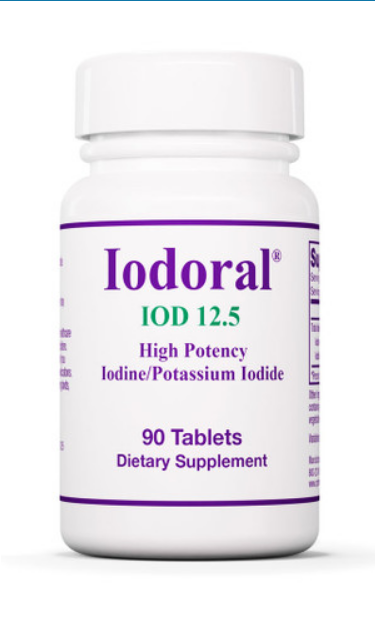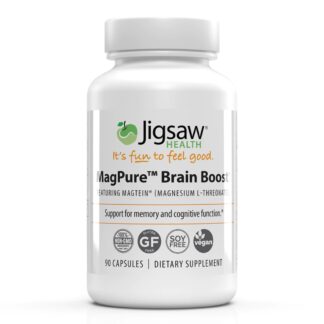Description
General Information
Iodine is an essential element. Although its main function is in the production of thyroid hormones by the thyroid gland, other organs in the body have a need for iodine in order to function normally.*(4)
Several studies have demonstrated a need for iodine intake.*(1,2) The minimum amount of iodine determined in these studies is equivalent to 0.1 mg/kg body weight/day.* For example, for a 50 kg woman, the daily amount of iodine would be 5 mg.* The thyroid gland needs iodide to function properly. The original study done 80 years ago in adolescent girls used 9 mg iodide daily.*(3)
During the early 1900’s, the iodine/iodide solution called Lugol solution was used extensively, effectively and safely in medical practice, for both low activity and above normal activity of the thyroid gland.*(4) The recommended daily intake for iodine supplementation was 2 to 6 drops of Lugol solution, providing 12.5 to 37.5 mg total iodide. That amount was mentioned as lately as 1995 in a book on Pharmaceutical Sciences.(5)
Several investigators have shown convincing evidence for the need for adequate iodine intake.*(6) Japanese women living in Japan consumed a daily average of 13.8 mg total elemental iodine and some research suggests this is an important factor for their relative health.*(6) In the 1960’s, one slice of bread in the USA contained the full RDA of 0.15 mg iodine. Over the last 2 decades, iodine was replaced by bromine in the bread making process. Bromine may block thyroid function and may interfere with iodine in the body.*(4),(7)
The RDA limits for vitamins and minerals were established after World War II. One of the last essential elements included in the RDA system was iodine, established in 1980 and confirmed in 1989.(8) The RDA for iodine was based on the amount of iodine/iodide needed to prevent goiter, extreme stupidity and hypothyroidism.*(9) The optimal requirement of the whole human body for iodine has never been studied. Therefore, the optimal amount of this element for physical and mental wellbeing is unknown. Based on demographic studies, the mainland Japanese consumed an average of 13.8 mg daily and they are one of the healthiest people on planet earth.*(6) Lugol solution is a time-tested preparation with a proven track record for over 150 years.* Two drops contain 12.5 mg iodine/iodide, an amount very close to the 13.8 mg average intake of mainland Japanese.*
Rationale For This Formulation
Administration of iodine/iodide in liquid solution is not very accurate, may stain clothing, has an unpleasant taste and can cause gastric irritation. Iodoral® is a precisely quantified tablet form containing 5 mg iodine and 7.5 mg iodide as the potassium salt. To prevent gastric irritation, the iodine/iodide preparation is absorbed into a colloidal silica excipient, and to eliminate the unpleasant taste of iodine, the tablets are coated with a thin film of pharmaceutical glaze.*(10)
SUGGESTED USE: Take one tablet per day or as directed by a physician.
WARNING: If pregnant or nursing, consult your healthcare practitioner before use. Keep out of reach of children. Do not use if you have an iodine sensitivity, or if you are taking anti-hypertension or anti-thyroid medications. Discontinue use if you develop swollen salivary glands, stomach upset, or skin rash.
Store in a cool, dry and dark place.
*This statement has not been evaluated by the U.S. Food and Drug Administration. This product is not intended to diagnose, treat, cure, or prevent any disease.





